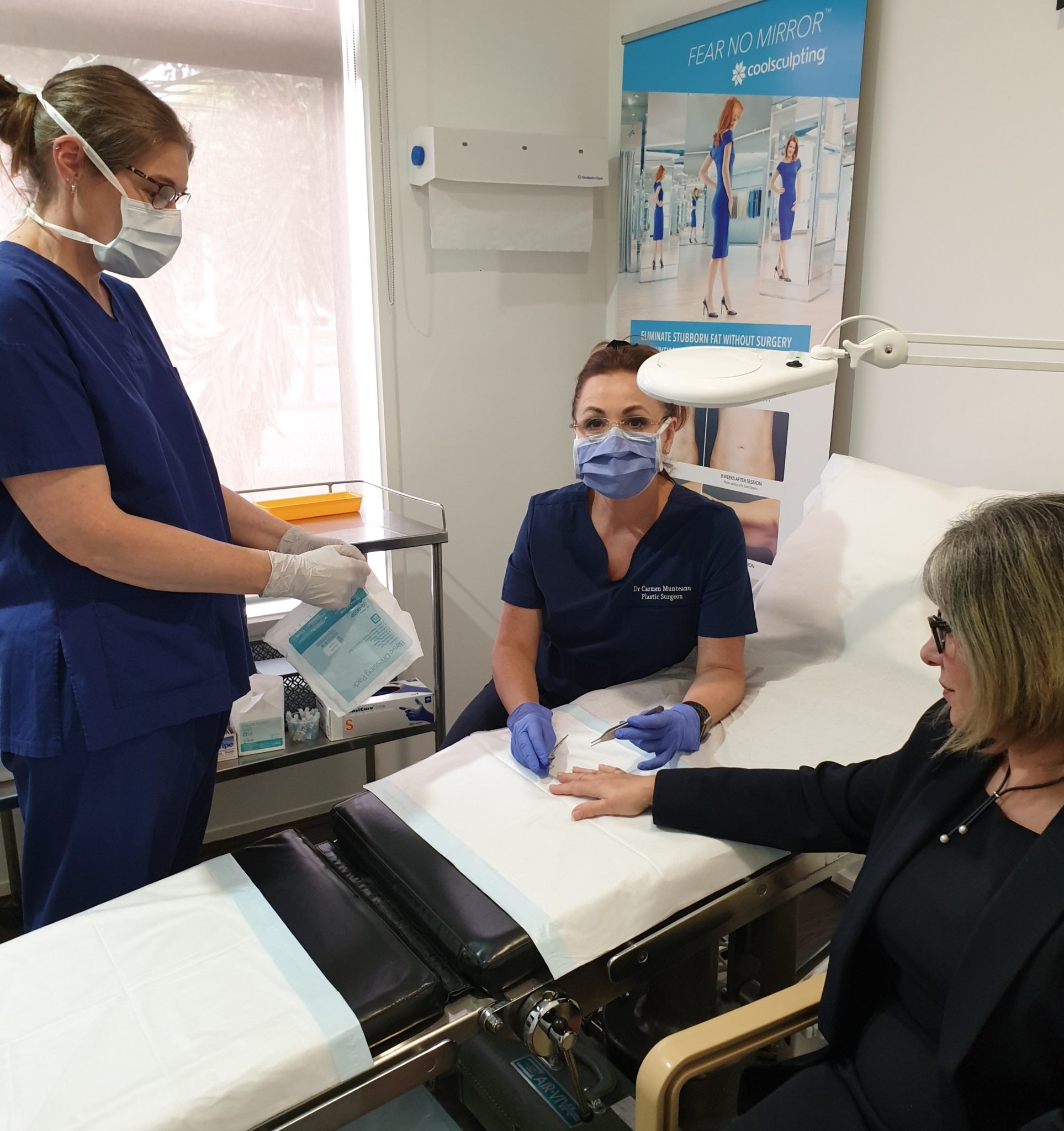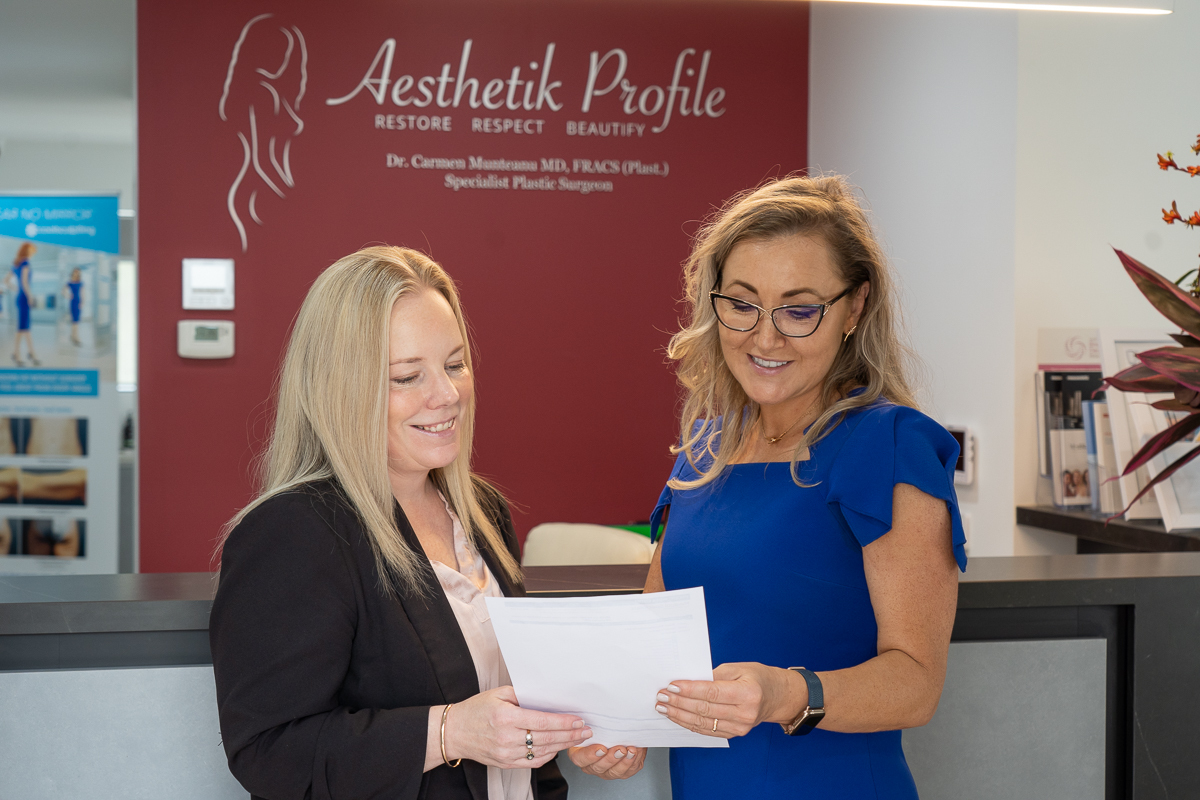Resuming Physical Activity Safely After an Abdominoplasty (Tummy Tuck)
Undergoing abdominoplasty, commonly known as a tummy tuck, is a significant decision that often comes with the promise of enhanced abdominal contours. However, as with any surgical procedure, the journey doesn’t end once you leave the operating room. The post-operative phase is equally, if not more, important to ensure the success of the surgery and achieve the desired results. One of the most frequently asked questions post-surgery revolves around exercise: When can I resume exercise after abdominoplasty? How intense can it be? What precautions should I take?
Dr Carmen Munteanu MD. FRACS (Plas) is a highly skilled and experienced Melbourne specialist plastic surgeon who will also give you instructions to adhere to after Abdominoplasty surgery.
Download Dr Carmen’s Tummy Tuck Surgery – Abdominoplasty Guide
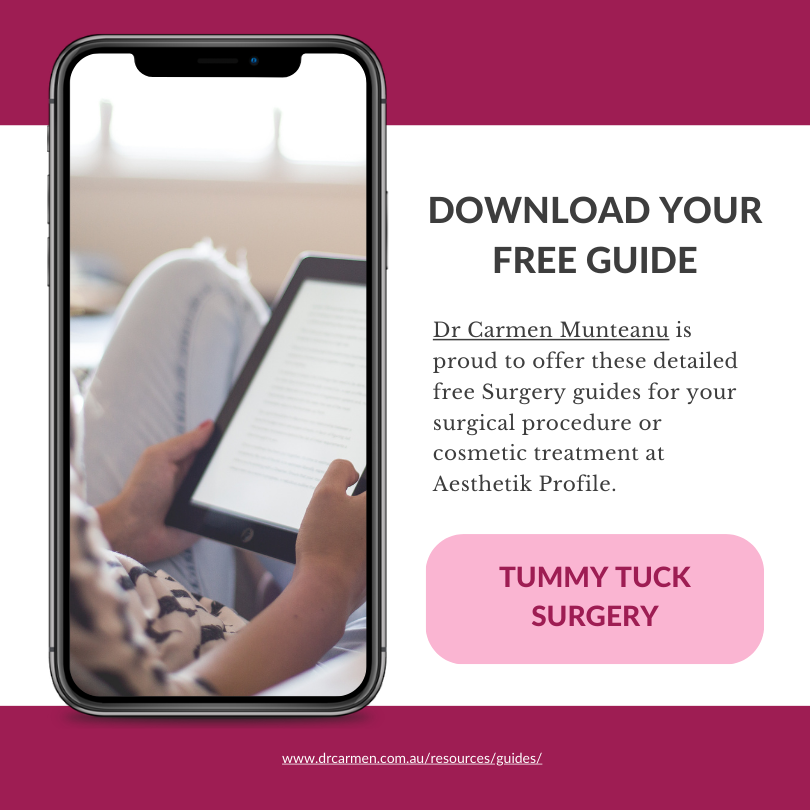
What Is Abdominoplasty?
Abdominoplasty, often referred to as a tummy tuck, is a surgical procedure that aims to remove excess skin and fat from the abdomen. Additionally, it assists in tightening the muscles in the abdominal region, resulting in a smoother and more defined appearance. You might wonder why someone would opt for such a procedure. Well, there are several reasons. For some, it’s about addressing the physical changes that come after pregnancy or after shedding a significant amount of weight. For others, it’s a desire for a more toned look. Whatever the reason, it’s essential to understand the procedure and its benefits fully.
The Importance of Post-Surgery Recovery
After undergoing any surgical procedure, it’s vital to recognise and respect the body’s natural healing process. This recovery time is essential as it facilitates the reduction of swelling, ensures the proper healing of incisions, and allows the treated area to strengthen and mend. However, it’s worth noting the potential risks associated with hastening the recovery process. If you push yourself to resume regular activities too quickly, you might face complications. These can range from prolonged swelling to the more concerning issues like wound separation. Therefore, it’s paramount to provide your body with the adequate time it requires to heal properly.
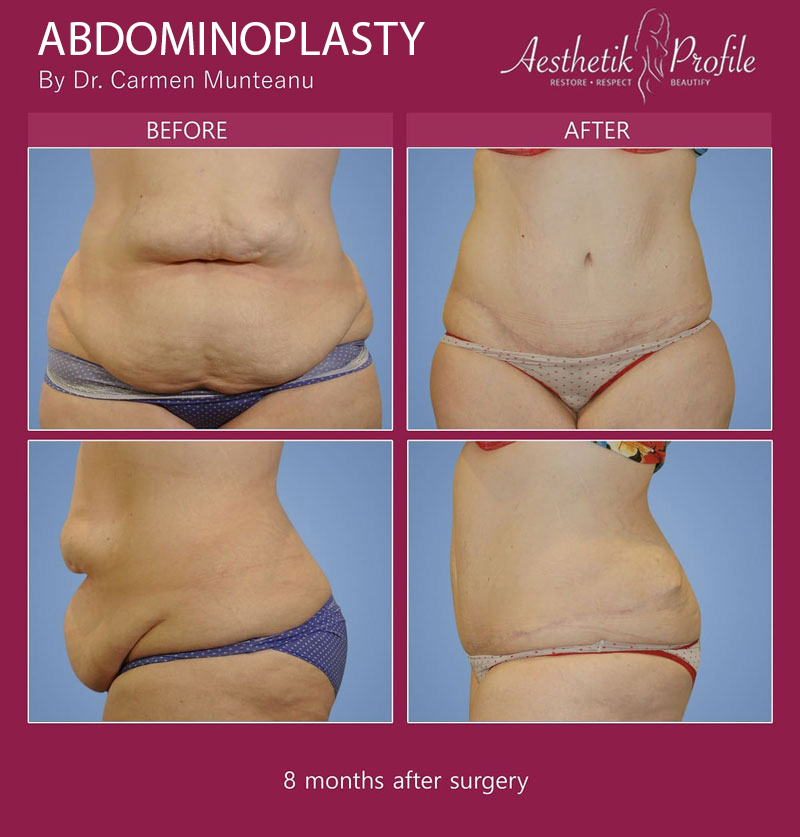
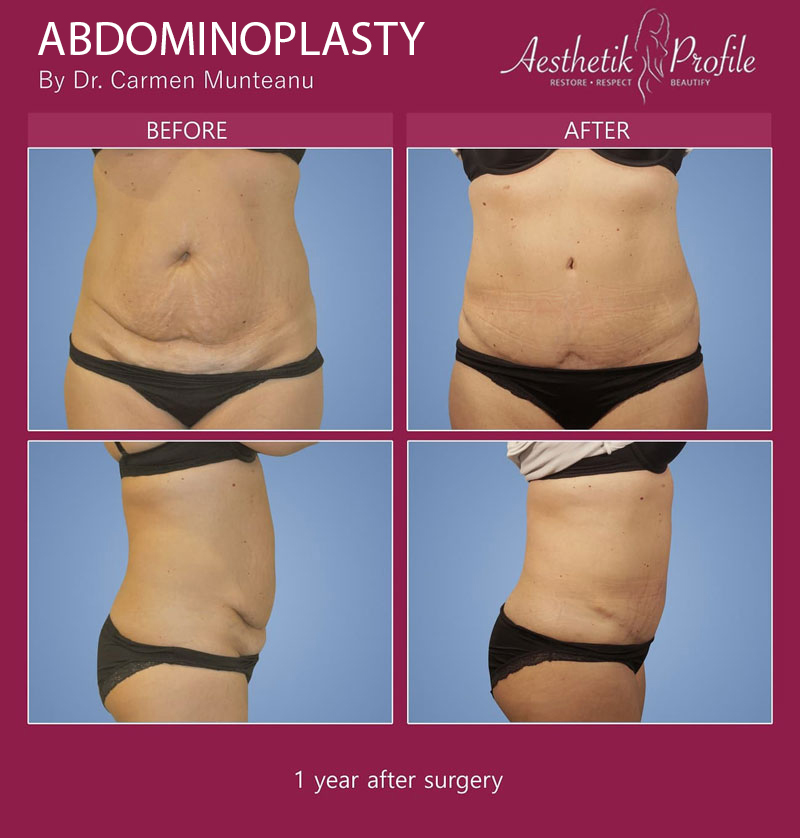
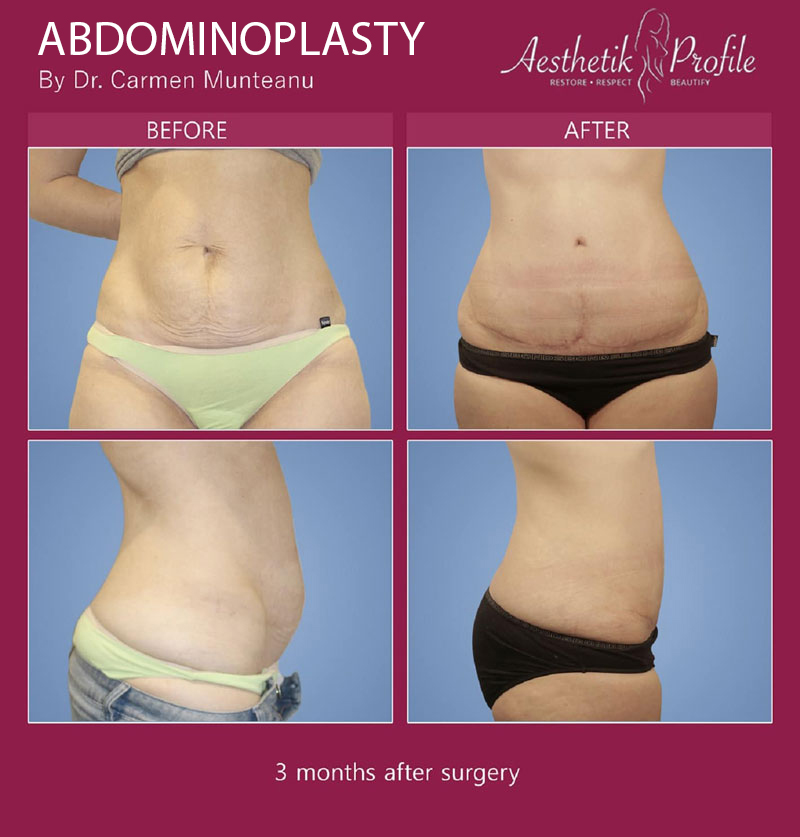
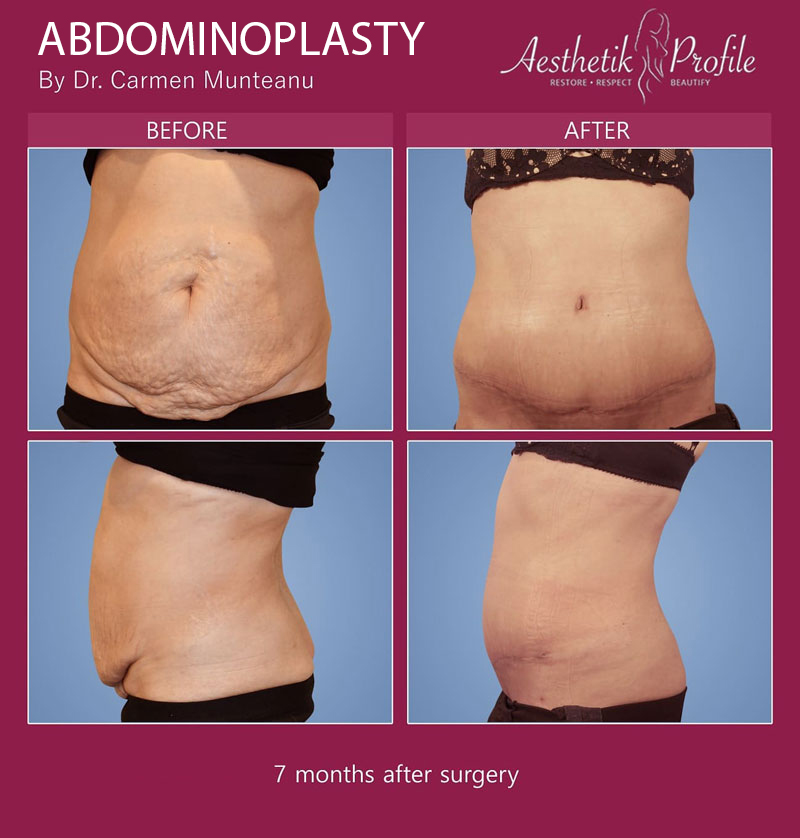
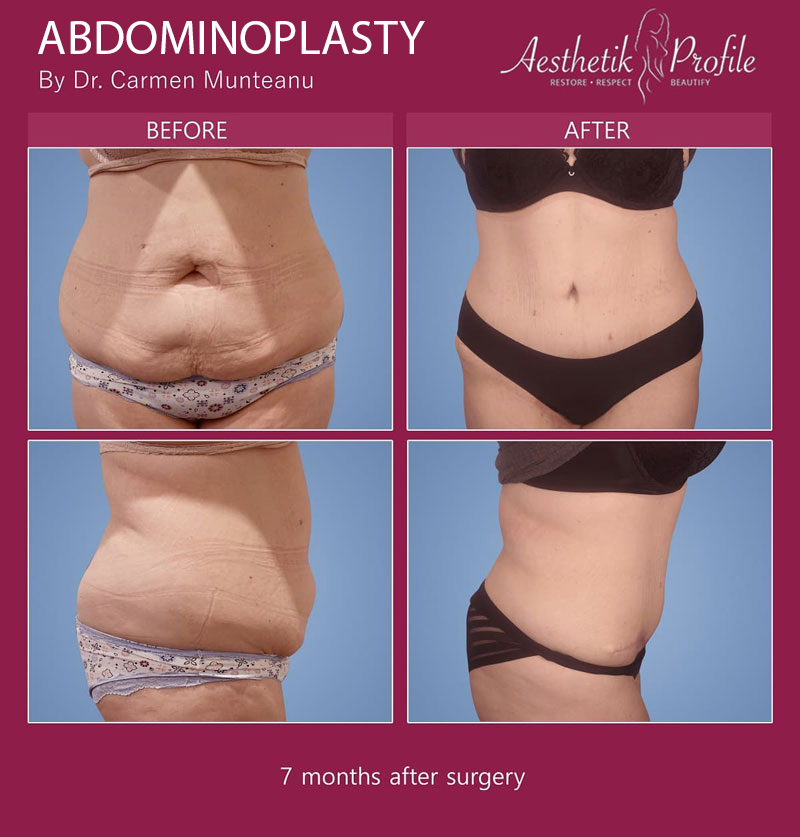
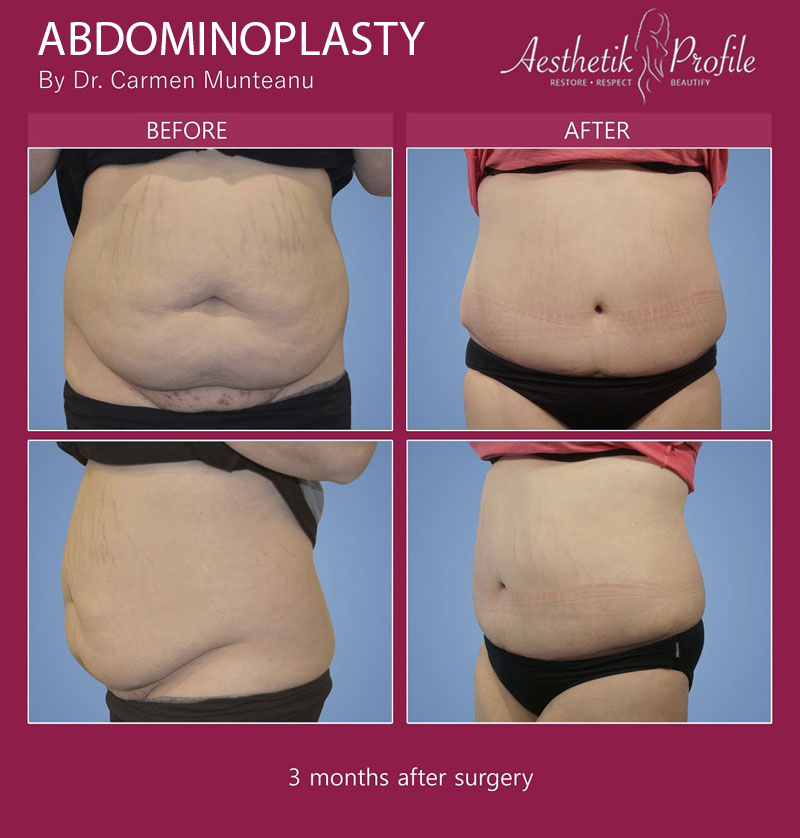
Guidelines for Resuming Exercise after Abdominoplasty
- In the immediate aftermath of your surgery, the primary focus should be on rest and allowing your body to initiate its natural healing process. During these initial weeks, it’s vital to limit your movement and especially steer clear of any activities that might exert pressure or strain on the abdominal region. This is not the time to test your limits; instead, it’s a period for your body to adapt and start the recovery journey
- As the weeks go by and you begin to feel stronger, you can consider reintroducing some light activities into your daily routine. A simple activity like walking can be beneficial. It promotes circulation and can aid in the healing process. However, it’s essential to gauge how you feel during these activities. If at any point you feel discomfort or any unusual sensations, it’s a clear indicator that you might be pushing yourself too hard. The key here is to be gentle with yourself and progress at a pace that feels right for you
- One of the most important aspects of recovery is tuning into your body’s signals. It’s the best indicator of how you’re truly healing. If you notice any discomfort, pain, or anything that feels out of the ordinary, take it as a sign that you need to take a step back. It might also be a good idea to discuss any concerns with Dr Carmen, as she can provide guidance tailored to your specific situation. Remember, the goal is a safe and effective recovery, not a rushed one
Types of Exercises – Timeline for Resuming Exercises after Abdominoplasty
Light activities: walking, stretching
It’s essential to strike a balance between promoting healing and ensuring you don’t remain entirely sedentary, which can have its own set of challenges.
- Weeks 1-2: During the initial weeks after your surgery, the primary activity you should consider is light walking, mainly within the confines of your home. Walking, even if it’s just a few steps at a time, can play a significant role in promoting circulation. Good circulation is vital as it not only aids in the healing process but can also help in preventing potential complications, such as the formation of blood clots. As for stretching, while it might be tempting to get those muscles moving, it’s essential to be cautious. Any stretching done during this period should be gentle and focused away from the abdominal region to prevent any undue stress or strain on the healing tissues
- Weeks 3-4: As you transition into the third and fourth weeks post-surgery, you might start feeling a bit more energetic and keen to increase your activity levels. This is a good sign, indicating that your body is healing well. You can consider extending the duration of your walks, maybe even taking short strolls outside to get some fresh air. The change in environment can be refreshing and can give you a much-needed boost. When it comes to stretching, you can start incorporating some gentle movements. It’s still essential to be mindful of the abdominal area. Any stretches or movements should be done without putting any strain on this region, ensuring you continue to heal without setbacks
Moderate activities: jogging, cycling
- Weeks 5-6: If you feel up to it and with Dr Carmen’s approval, you can introduce moderate exercises like jogging at a slow pace or stationary cycling. Always start slow and monitor how your body responds
- Weeks 7-8: Gradually increase the intensity, but remain cautious. Remember, it’s not about how fast you can return to your routine, but how safely you can do it
Intensive activities: weightlifting, high-intensity workouts
- Weeks 9-10: By this time, you might feel ready to return to more strenuous activities. It’s essential to start with lighter weights than you’re used to and avoid direct abdominal exercises
- Weeks 11-12: If you’ve been progressing without issues, you can start incorporating more intensive workouts. Always be cautious with abdominal exercises and consider consulting a fitness professional familiar with post-surgery recovery
Tips for a Safe Return to Exercise
- Setting realistic expectations: Understand that your body has undergone a significant procedure. It’s natural to take time to return to your pre-surgery fitness levels. Celebrate small milestones and be patient with your progress
- Monitoring your progress: Keep a journal or log of your activities. Note how you feel during and after exercises. This can help you track your progress and identify any potential issues early on
- Seeking professional advice: Always keep an open line of communication with your plastic surgeon. If you’re unsure about an activity or feel something isn’t right, it’s better to seek advice. Additionally, consider working with a physiotherapist or personal trainer familiar with post-operative recovery
Addressing Common Concerns Post-Abdominoplasty
- Swelling and Bruising: It’s normal to experience some swelling and bruising after the surgery. Wearing a compression garment as advised by your plastic surgeon can help manage this. Remember, swelling can increase with excessive activity, so it’s essential to pace yourself
- Scarring: Scarring is a natural part of the healing process. Over time, with proper care, scars will fade and become less noticeable. Avoid exposing the scar to direct sunlight, and always use sunscreen to prevent darkening
- Numbness or Tingling: Some individuals might feel numbness or tingling in the treated area. This sensation is typically temporary and improves as the nerves heal. If it persists or becomes bothersome, consult Dr Carmen
- Diet and Hydration: Proper nutrition and hydration play a vital role in recovery. Ensure you’re consuming a balanced diet rich in proteins, vitamins, and minerals. Drink plenty of water to support the body’s healing process
The Emotional Aspect of Recovery
- Managing Expectations: It’s essential to understand that results might not be immediately visible due to swelling and the healing process. Give your body the time it needs, and soon you’ll see the transformation you desired.
- Seeking Support: Recovery can sometimes be emotionally challenging. Surround yourself with supportive friends and family. Consider joining support groups or forums where you can connect with others who’ve undergone similar procedures
- Mental Well-being: Engage in activities that uplift your spirits. Whether it’s reading, listening to music, or practicing mindfulness and meditation, find what works for you. Remember, mental well-being is as important as physical recovery
Long-Term Care
- Regular Check-ups: Schedule regular check-ups with your plastic surgeon to monitor your progress. This ensures any potential issues are addressed promptly
- Maintaining a Healthy Lifestyle: To preserve the results of your abdominoplasty, it’s essential to maintain a healthy lifestyle. This includes a balanced diet, regular exercise (once fully recovered), and avoiding significant weight fluctuations
- Skin Care: Proper skincare can enhance the appearance and longevity of your results. Moisturise regularly, protect your skin from the sun, and consider treatments that promote skin elasticity and health
FAQs about Exercises after Abdominoplasty

When can I safely return to my regular exercise routine after abdominoplasty?
- It varies for each individual, but generally, light activities like walking can be reintroduced a few weeks post-surgery. More strenuous exercises, especially those targeting the abdominal area, should be avoided for at least 6-12 weeks or until Dr Carmen gives the green light.
Are there specific exercises I should avoid after a tummy tuck?
- Yes, during the initial recovery phase, it’s essential to avoid exercises that strain the abdominal muscles, such as sit-ups, crunches, and heavy lifting. Always consult with Dr Carmen or a physiotherapist familiar with post-operative recovery before reintroducing these exercises.
How will I know if I’m pushing myself too hard during exercise?
- Listen to your body. If you experience pain, discomfort, increased swelling, or any other unusual symptoms after exercising, it’s a sign that you might be overexerting yourself. It’s essential to stop and consult your plastic surgeon if you have any concerns.
Can exercise impact the results of my abdominoplasty?
- While regular exercise can enhance and maintain the results of your tummy tuck – abdominoplasty in the long run, exercising too soon or too intensely after surgery can compromise your results and even lead to complications. It’s essential to follow post-operative guidelines and reintroduce exercise gradually.
How can I stay active without compromising my recovery?
- Focus on low-impact activities during the initial recovery phase. Walking is an excellent way to stay active without putting too much strain on your body. As you progress in your recovery, you can gradually reintroduce more activities, always ensuring you’re comfortable and not pushing beyond your limits.
Further Reading about Abdominoplasty with Dr Carmen
- Read Dr Carmen’s Tummy Tuck – Abdominoplasty Surgery Page
- Read Dr Carmen’s Blog about Recovery after Tummy Tuck – Tips, Timeline and FAQs after Abdominoplasty
- Read Dr Carmen’s Blog about Will Medicare Cover My Tummy Tuck – Abdominoplasty?
- Read Dr Carmen’s Blog about Extended Tummy Tuck FAQs – Questions about Extended Abdominoplasty
- Read Dr Carmen’s Blog about Preparing for Abdominoplasty Surgery
- Read Dr Carmen’s Blog about Tips for Sleeping after Abdominoplasty Surgery
Medical References about Abdominoplasty
- Tummy Tuck | Patient Guide – The American Board of Cosmetic Surgery
- Abdominoplasty (Tummy Tuck) – Australian Society of Plastic Surgeons
- What You Need to Know About Your Abdominoplasty Recovery – ASPS
- What To Know About Recovery from An Abdominoplasty – WebMD
- Tummy Tuck – Mayo Clinic

